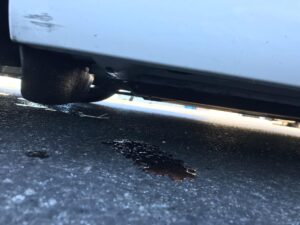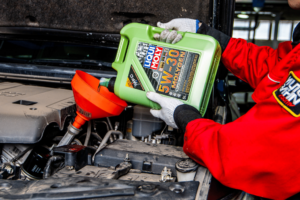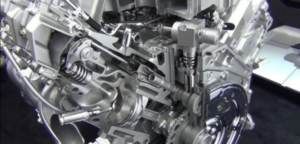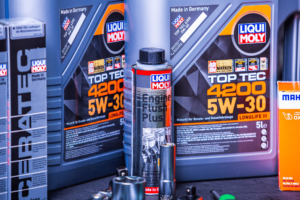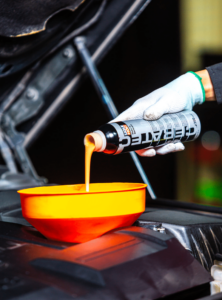We take a closer look at the Mercedes W123 engine and specifically the 240D (455,000 built), the 230E (442,000 built), and the 200D (378,000 built). version and highlight the common problems owners might face
What does W123 stand for?
The “W123” is an internal chassis designation used by Mercedes-Benz for a series of executive cars produced between 1976 and 1985. In this context:
“W” stands for “Wagen,” which is German for “car” or “vehicle.”
“123” is simply the series number or identifier that Mercedes-Benz used for this particular range of cars.
So, “W123” essentially denotes a specific series of cars within the Mercedes-Benz lineup. This series is widely recognized for its robust build and reliability, and it has become iconic among Mercedes enthusiasts and classic car aficionados worldwide.

What is the difference between W123 and W124?
The W123 and W124 are both series of executive cars produced by Mercedes-Benz, but they come from different eras and have distinctive features. Here’s a comparative overview of the two:
Production Years:
W123: Produced from 1976 to 1985.
W124: Produced from 1984 to 1997. It directly succeeded the W123.
Design and Aesthetics:
W123: The design is more of a classic 1970s style, with round headlights (for most models) and chrome detailing. It looks more upright and traditional.
W124: Introduced a more aerodynamic and modern design, aligning with the 1980s and 1990s aesthetics. The W124 also used flush-fitting windows to reduce wind noise and improve aerodynamics.
Technological Advancements:
W123: While advanced for its time, it lacked many of the technological innovations that the W124 later introduced.
W124: Known for introducing several innovations in safety, aerodynamics, and efficiency. It was one of the first cars to feature an integrated front bumper and aerodynamic covers over the wheel arches. Additionally, it was among the first production vehicles to offer a driver’s side airbag and anti-lock brakes.
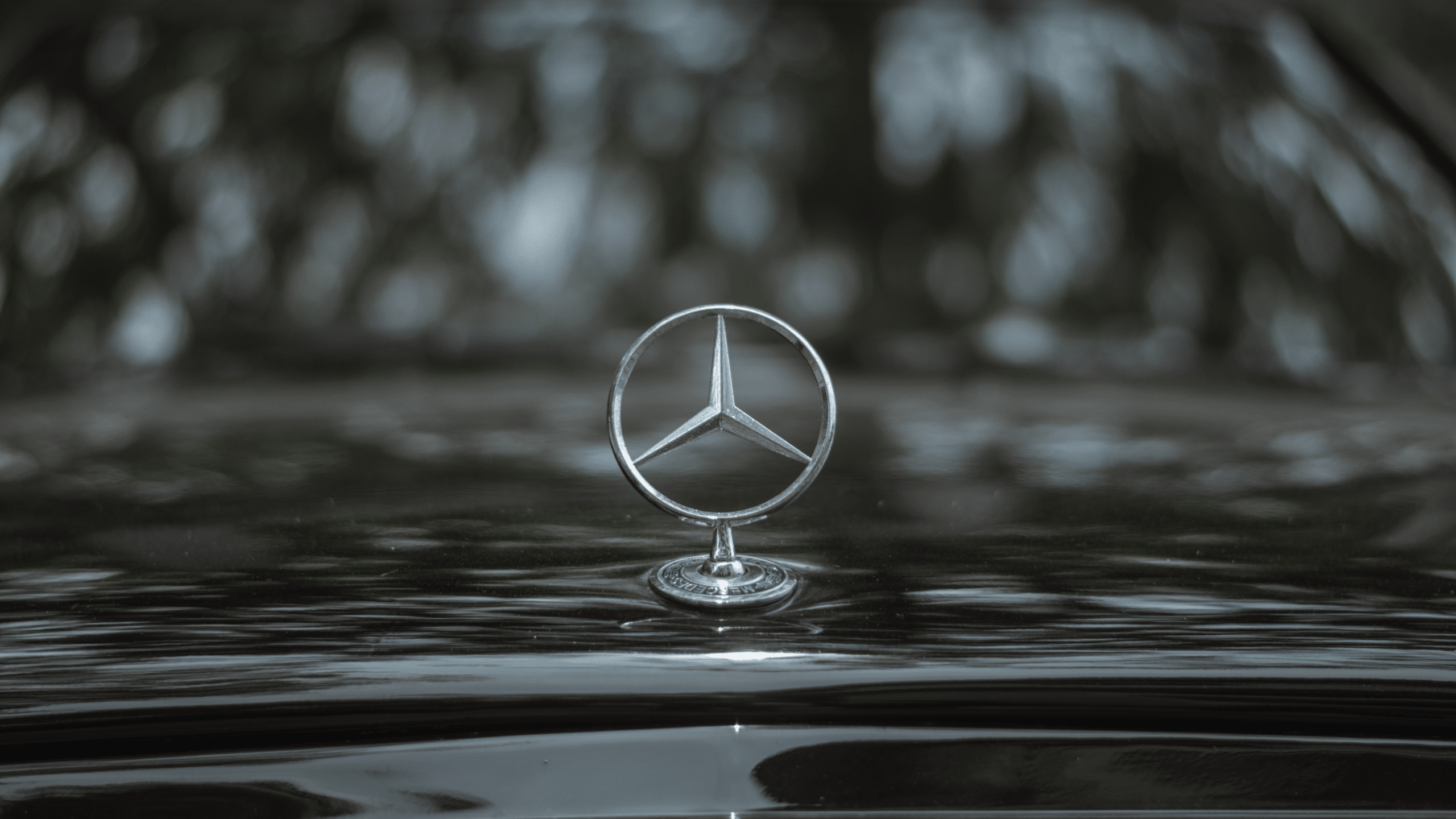
Variants:
W123: Available in sedan, coupe, and estate (wagon) models. Mercedes also produced a long-wheelbase version and a factory-built limousine.
W124: Had a broader range of body styles including sedan, coupe, estate (wagon), and convertible. A long-wheelbase limousine was not offered, but specialized companies made aftermarket conversions.
Engine Options:
W123: Offered a range of gasoline and diesel engines, including naturally aspirated and turbocharged diesels.
W124: Continued with the tradition of offering both gasoline and diesel engines but introduced more powerful and efficient engines over its production run, including a range of multi-valve engines and the high-performance E500 developed in collaboration with Porsche.
Build and Durability: Both series are renowned for their build quality and durability. While the W123 is often celebrated for its tank-like robustness, the W124 continued this legacy with improvements in rust prevention and overall build quality.
Interior and Comfort:
W123: Featured a classic design with high-quality materials.
W124: Offered a more modern interior layout with advancements in ergonomics and more use of electronics for various functions.
In summary, while the W123 is cherished for its classic design and robustness, the W124 is appreciated for its advancements in technology, safety, and aerodynamics while maintaining the brand’s reputation for quality and durability.
Is the W123 engine good?
Yes, the engines used in the Mercedes-Benz W123 series are generally regarded as robust and durable. The W123 was offered with a range of gasoline and diesel engines, and both types have their own sets of advantages:
Diesel Engines:
Reliability: The diesel engines, especially the naturally aspirated and turbocharged 5-cylinder versions (like the 300D and 300TD), have earned a reputation for longevity. It’s not uncommon to hear of these engines surpassing 500,000 miles with regular maintenance.
Simplicity: These engines lack the electronic components and systems that can sometimes be problematic in more modern cars, leading to fewer issues in that regard.
Fuel Economy: The diesel engines of this era are known for their good fuel economy, especially when compared to the gasoline counterparts of the time.
Gasoline Engines:
Performance: While not particularly powerful by modern standards, the gasoline engines provided better acceleration and overall performance compared to the diesel variants.
Smoothness: The gasoline engines tend to operate more smoothly and quietly than the diesels, providing a more refined driving experience.
However, there are some caveats to be aware of:
Age: Given that the newest W123 is now several decades old, any engine, no matter how well-built, will have wear and tear. Proper maintenance history is vital.
Maintenance: Part of the reason for the W123’s reputation for longevity is the regular maintenance they often receive. Skipping essential maintenance can drastically reduce the lifespan of the engine.
Parts Availability: While there is still a robust enthusiast community and many parts are available, some specific components can be harder to come by or more expensive than they once were.
In conclusion, the engines in the W123 series, when maintained properly, are known for their durability and longevity. However, as with any vintage car, the condition of a specific vehicle will depend on how well it’s been cared for over the years.
Is the W123 reliable?
Yes, the Mercedes-Benz W123 series is renowned for its reliability and robustness. It has achieved legendary status among car enthusiasts and mechanics alike for several reasons:
Build Quality: Mercedes-Benz built the W123 with quality in mind. The materials used, both in the interior and exterior, were of high quality. This level of craftsmanship has contributed to the car’s longevity.
Simple Engineering: The W123, especially in its earlier years, lacks many of the electronic components and systems that can be problematic in more modern vehicles. This simplicity often translates to fewer things that can go wrong.
Diesel Engines: The diesel engines offered in the W123, particularly the 300D, are famous for their longevity. It’s not uncommon to hear of these engines running smoothly after hundreds of thousands of miles, given proper maintenance.
Rust Resistance: Though not immune to rust, the W123 was better at resisting it than many of its contemporaries, especially if kept in favorable conditions.
Strong Aftermarket Support: Due to its popularity, there’s a robust community of enthusiasts and mechanics familiar with the W123. This has made parts relatively easy to come by, and there’s a wealth of knowledge available for troubleshooting and repairs.
However, there are considerations for potential owners:
Age-Related Issues: The youngest W123 cars are now several decades old, so wear and tear, deteriorated rubber parts, and age-related issues are to be expected, even if the model is known for its durability.
Maintenance is Crucial: One reason many W123s are still running today is because of diligent maintenance by their owners. Regular maintenance is key to the car’s longevity.
Potential for Neglect: Due to the car’s reputation for robustness, some owners might have neglected regular maintenance, mistakenly believing the car to be “indestructible.”
In summary, the W123 is widely regarded as one of the most reliable and durable vehicles ever produced by Mercedes-Benz, or any other manufacturer for that matter. However, prospective buyers should approach with the understanding that any vintage vehicle will require attentive care and might present issues due to age.
W123 Maintenance and Common Engine Problems
How to maintain a W123
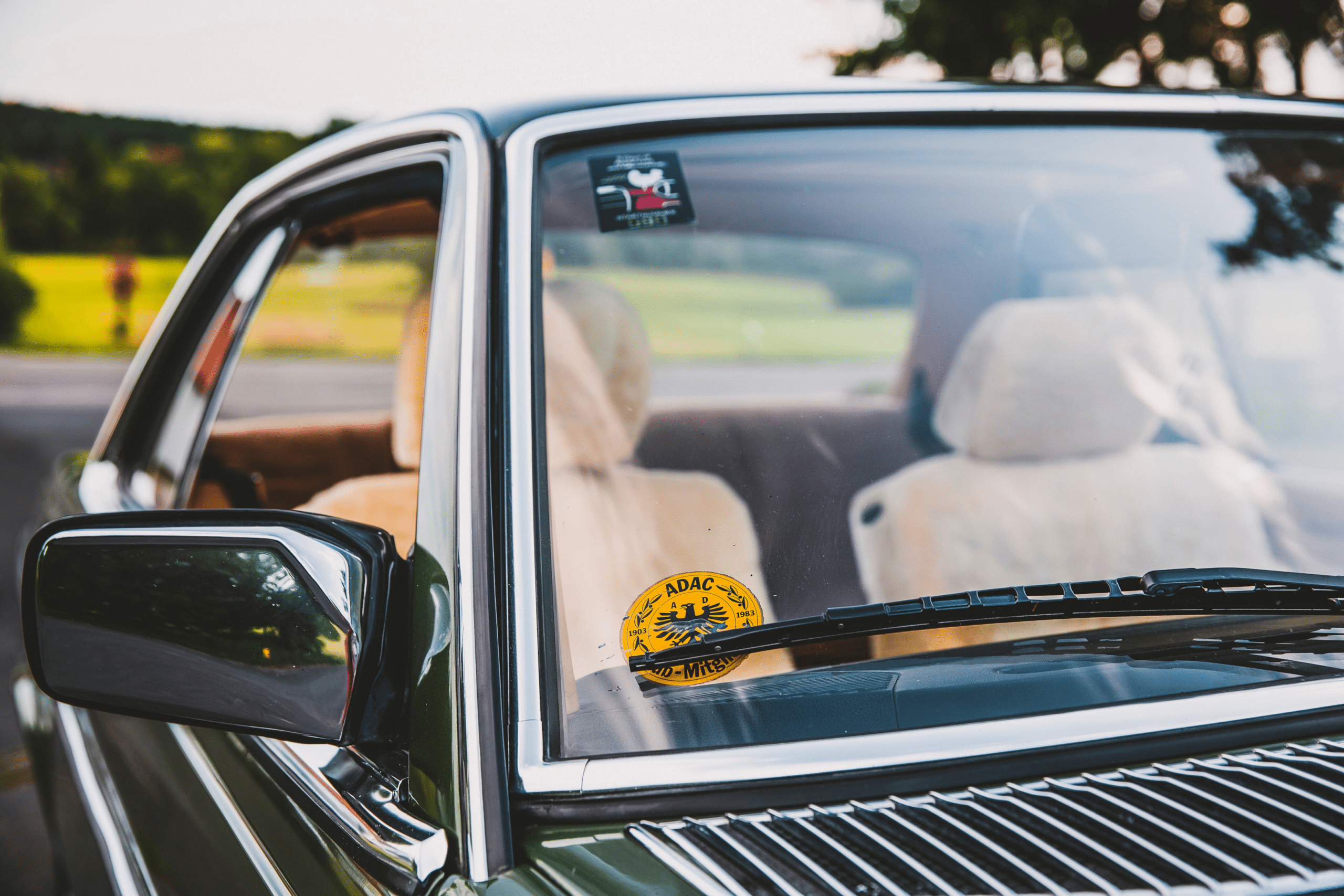
Maintaining a classic car like the Mercedes-Benz W123 requires a combination of regular maintenance, addressing age-related issues, and some special considerations due to its vintage nature. Here’s a guideline on how to maintain a W123:
Regular Maintenance
Oil and Filter Change: Depending on usage and the type of oil you use, change the engine oil and filter every 3,000 to 5,000 miles. Older engines might require more frequent changes.
Air Filter: Check and replace the air filter as needed, generally once a year or every 12,000 miles.
Fuel Filter: Replace annually or every 12,000 miles. Diesel models might have additional pre-filters.
Spark Plugs: For petrol engines, replace spark plugs every 10,000 to 20,000 miles depending on the type of plugs used.
Fluids: Regularly check and top off or replace other fluids like brake fluid, transmission fluid, power steering fluid, and coolant.
Addressing Age-related Issues
Rubber Components: Over time, rubber parts like belts, hoses, and seals can deteriorate. Inspect them regularly and replace as necessary.
Rust Prevention: Older cars like the W123 can be prone to rust. Regularly inspect for rust, especially in common areas like wheel arches and the bottom of doors. Address any rust spots immediately, and consider rust-proofing treatments.
Electrical System: With age, electrical issues might crop up due to worn-out components or corroded connections. Check electrical components regularly, clean contacts, and replace faulty parts.
Special Considerations for Classic Cars
Fuel: Modern fuels, especially petrol with ethanol, can sometimes be problematic for older engines. Consider using ethanol-free gasoline or adding a fuel stabilizer or additive suitable for classic cars.
Storage: If you’re not using the W123 daily, consider storing it in a dry, covered place to protect it from the elements. Use a breathable car cover, and if storing for extended periods, consider a fuel stabilizer and battery maintainer.
Tires: Even if they have plenty of tread, older tires can harden and become unsafe. Check the manufacture date on the sidewall and consider replacing tires that are over six years old.
Regular Inspections
Under the Car: Regularly put the car on a lift or use jack stands to inspect the underside. Check for any fluid leaks, rust, or damaged components.
Brakes: Check the brake pads, rotors, and fluid. Replace or service as necessary.
Use and Enjoy
One of the best ways to maintain a classic car is to drive it. Regular use keeps the engine and other components lubricated and in working order. However, avoid harsh conditions like extreme cold or heat.
Documentation
Keep a detailed log of all maintenance and repairs. This documentation not only helps you keep track but also adds to the provenance and value of the vehicle.
Specialist Advice
Consider building a relationship with a mechanic or workshop that’s familiar with older Mercedes or classic cars in general. Their expertise can be invaluable.
Spare Parts
Given the age of the W123, it might be wise to stock up on some essential spare parts, especially those that might become harder to find in the future.
By following a regular maintenance schedule and addressing issues promptly, you can ensure that your W123 remains in top condition and continues to provide the joy of classic motoring for years to come.
Common Problems of W123
The Mercedes-Benz W123 is a range of executive cars produced by German manufacturer Mercedes-Benz from 1976 to 1985. Renowned for its durability and build quality, the W123 is still a favorite among classic car enthusiasts today. However, like any vintage car, the W123 series has its share of common problems, despite its general reputation for reliability. Some of the frequently reported issues include:
1. Rust: One of the main issues with older W123 models is rust. Key areas to inspect include the jack points, front fenders (especially behind the wheel), the area under the battery tray, and the edges of the trunk.
2. Vacuum System: The W123 employs a complex vacuum system that controls everything from door locks to the transmission. Leaks in this system can cause a variety of issues, such as problems with shifting or non-functional door locks.
3. Automatic Transmission: Some owners have reported problems with the automatic transmissions, especially if they haven’t been well-maintained. Common issues include rough or delayed shifts.
4. Climate Control: The climate control system can be problematic. The mono-valve (which controls the flow of coolant to the heater core) can fail, leading to a lack of heat. Also, the servo unit that controls the climate functions can be troublesome and expensive to replace.
5. Engine Overheating: This can be due to a variety of reasons, including a faulty thermostat, clogged radiator, or issues with the water pump.
6. Front Suspension: Components in the front suspension, like the control arm bushings and ball joints, can wear out and require replacement.

7. Interior: As the car ages, interior components such as the dashboard, seat upholstery, and trim can show signs of wear or deterioration.
8. Electrical Gremlins: As with many older vehicles, the electrical system can develop intermittent issues, ranging from malfunctioning window switches to faulty glow plug relays in diesel models.
9. Oil Leaks: Older engines might develop oil leaks around areas like the valve cover gasket, oil pan, or the rear main seal.
10. Fuel System: For diesel models, issues can arise with the fuel injectors, primer pump, and pre-glow system. It’s also important to ensure that the fuel tank is free from internal rust and debris which can clog the fuel system.
Regular maintenance and early detection can help address many of these issues before they become severe problems. It’s always advisable for potential buyers or current owners to familiarize themselves with the common problems and keep an eye out for them.
How to change the engine oil of a W123?
Changing the engine oil in a Mercedes-Benz W123 is a straightforward process, similar to many other cars of its era. Here’s a step-by-step guide to help you change the engine oil:
Materials and Tools:
New engine oil (consult your owner’s manual or a trusted source for the correct grade and quantity)
New oil filter
Oil filter wrench or tool
Oil drain pan
Socket set and wrench
Funnel
Jack and jack stands (or a car ramp)
Disposable gloves
Rags or paper towels
Procedure:
Preparation:
Warm up the engine for a few minutes to allow the oil to become less viscous. This helps in draining the old oil more effectively.
Switch off the engine and ensure the vehicle is on level ground.
Lifting the Car:
If necessary, jack up the front of the car. Ensure you use the proper jacking points to avoid damaging the vehicle. Once raised, secure the car with jack stands. (Alternatively, if you have car ramps, you can drive the car onto them.)
Draining the Oil:
Put on disposable gloves.
Place the oil drain pan beneath the oil pan (located at the bottom of the engine).
Use the appropriate socket or wrench to remove the oil drain plug. Be cautious as the oil might be hot. Allow the oil to fully drain into the pan.
Changing the Oil Filter:
Move the oil drain pan beneath the oil filter.
Using the oil filter wrench, unscrew and remove the old oil filter. Some oil will likely come out, so be prepared for it to drain into the pan.
Before installing the new filter, apply a small amount of fresh engine oil to the rubber gasket on the top of the new filter. This ensures a good seal.
Screw on the new oil filter. Hand-tighten it; do not overtighten.
Refilling the Engine Oil:
Once all the old oil has drained, replace and tighten the oil drain plug.
Remove the oil filler cap on top of the engine.
Place the funnel into the oil filler hole and pour in the new engine oil. Be careful not to overfill. Check the quantity recommended for your specific engine.
Checking the Oil Level:
Start the engine and let it run for a few minutes. Then switch off the engine and let it sit for another few minutes.
Pull out the dipstick, wipe it clean, then reinsert it fully. Pull it out again and check the oil level. It should be between the minimum and maximum marks.
Clean Up:
Carefully transfer the old oil from the drain pan to a container. Many auto parts stores or recycling centers accept used motor oil for recycling.
Dispose of the old oil filter properly.
Clean any tools and the work area.
Lower the car if it was raised.
Remember, regular oil changes are crucial for the longevity and proper function of your engine. Always refer to the specific recommendations for your W123 model and engine type, as there might be variations.
What is the best engine oil for W123?
When determining the best engine oil for a Mercedes-Benz W123, several factors come into play, including the specific engine model, the climate of the region you’re in, and whether the car has been modified or rebuilt. Generally, older engines like those in the W123 series benefit from thicker oils, especially if they have higher mileage and some internal wear.
Here are some general recommendations:
Gasoline Engines:
A classic multigrade oil like 20W-50 is often recommended. This provides good protection in a range of conditions, especially in warmer climates or during summer months.
For colder climates, you might consider a 10W-40.
Diesel Engines:
Diesel engines in the W123 series, like the famed OM617, can also benefit from a 20W-50 oil in warmer conditions.
In colder climates, a 15W-40 or 10W-40 might be more appropriate to ensure easier starts and immediate lubrication.
Brand Recommendations: Several reputable brands produce high-quality engine oils suitable for older vehicles, such as the W123:
Valvoline: Their VR1 Racing Oil, even though it’s labeled as a racing oil, is often praised by classic car enthusiasts due to its high zinc content which is beneficial for older engine designs.
Castrol: The GTX line, especially in 20W-50, is a popular choice for vintage cars.
Mobil 1: If you’re looking for a synthetic oil, Mobil 1 makes high-quality full synthetic oils that can work well in older engines, but it’s essential to ensure seals are in good condition to prevent potential leaks.
LIQUI MOLY: They have oils that cater to classic cars and can be suitable for the W123. More details are in the next section of this maintenance guide.
Shell Rotella: Particularly for diesel engines, Shell Rotella T4 15W-40 is a popular choice, providing excellent protection and longevity.
Regardless of brand, consider using a high-zinc oil or adding a zinc additive, especially for high-mileage or worn engines. Zinc acts as an anti-wear agent and can extend the life of older engines.
Always consult the vehicle’s owner’s manual or a Mercedes-Benz specialist when choosing oil. The key is regular oil changes and maintenance to ensure the longevity and performance of your W123’s engine.
Which is the best LIQUI MOLY engine oil for W123?
LIQUI MOLY is a reputable brand known for producing high-quality engine oils and additives. When choosing the best LIQUI MOLY engine oil for your Mercedes-Benz W123, you should consider the specific engine type in your vehicle (whether it’s gasoline or diesel) and the recommended oil specifications for that engine.

For older vehicles like the W123, LIQUI MOLY’s “Classic” line or oils formulated for high-mileage engines might be appropriate. Here are some general suggestions:
For Gasoline Engines:
LIQUI MOLY Classic SAE 20W-50
LIQUI MOLY Special Tec LL SAE 5W-30 (for a more modern formulation if your engine is in top shape)
For Diesel Engines:
LIQUI MOLY Leichtlauf High Tech 5W-40 (especially if you’re in a region with cold winters)
LIQUI MOLY Touring High Tech Diesel 20W-50 (more appropriate for regions with hotter climates or for engines that see higher temperatures)
Additives:
LIQUI MOLY also offers a range of oil additives, like their “Cera Tec” or “Motor Protect,” which can be beneficial for older engines by reducing wear.
However, always consult your vehicle’s owner’s manual or a Mercedes specialist to ensure that you’re using an oil that meets the specifications for your specific engine. Additionally, engines that have been rebuilt or modified might have different requirements. If in doubt, reaching out to LIQUI MOLY’s customer service with your vehicle’s details can also provide specific product recommendations.

Which is the best gearbox oil for a W123?
The Mercedes-Benz W123 series came with different types of transmissions: both manual and automatic. The best gearbox oil (transmission fluid) often depends on the specific type of transmission fitted to the car.
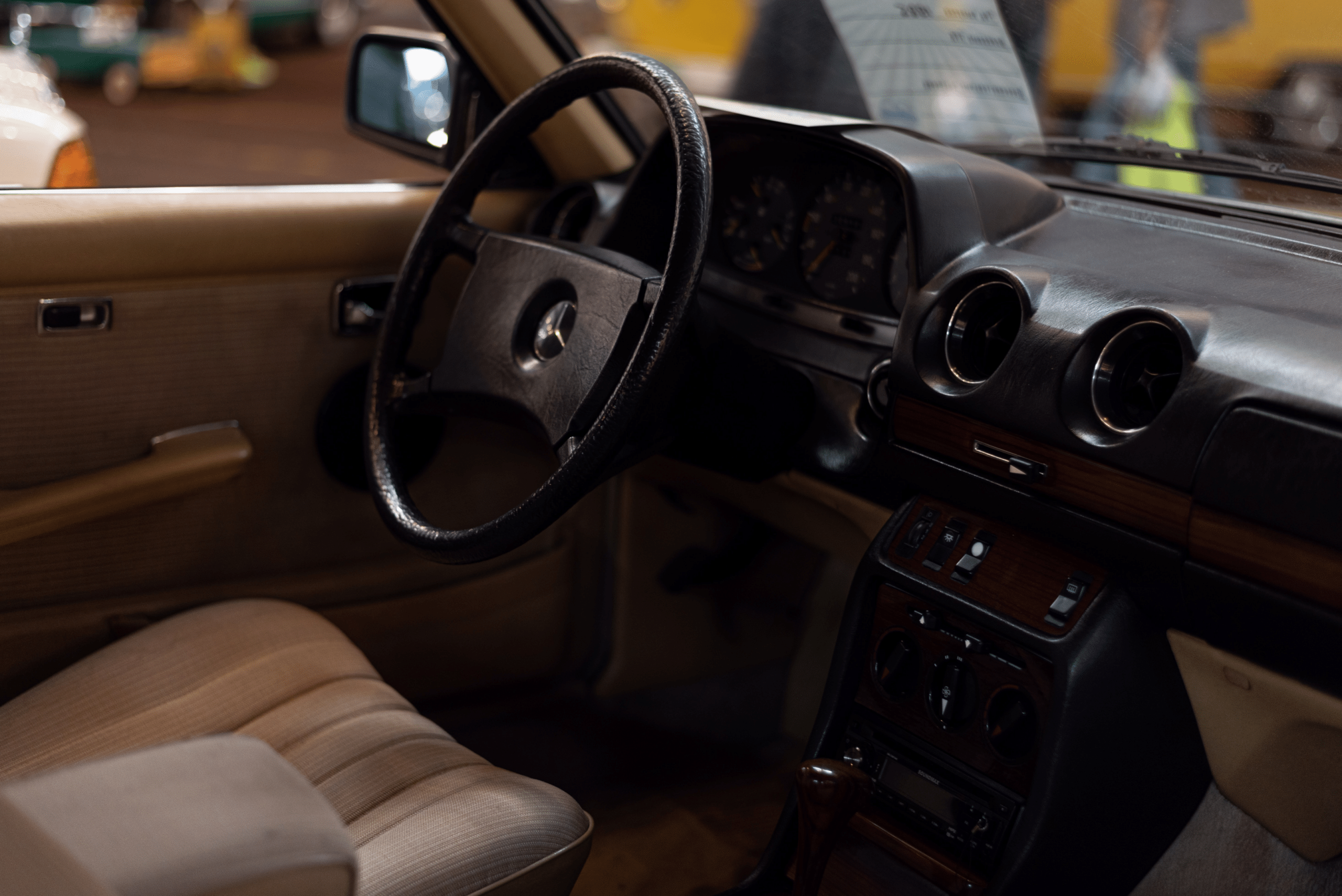
1. For Automatic Transmissions: Mercedes-Benz originally specified Dexron II transmission fluid for the W123’s automatic transmissions. Nowadays, Dexron II might be harder to find, but you can use:
Dexron III: It’s backward compatible with Dexron II.
Valvoline Dex/Merc: Suitable for older Mercedes automatic transmissions.
Castrol Transmax Dex III Multivehicle: Also appropriate for these transmissions.
2. For Manual Transmissions: Mercedes-Benz typically used a hypoid gear oil in their manual transmissions. The following can be considered:
SAE 80W or 85W-90: These are conventional mineral oil-based gear oils suitable for the manual gearboxes in the W123 series.
Brands to consider:
LIQUI MOLY
Castrol
Mobil
Valvoline
3. Power Steering: If you’re considering changing the fluid for the power steering system as well, Mercedes-Benz typically used ATF (Automatic Transmission Fluid), the same as the one used in the gearbox for W123 models with power steering.
Note: Always ensure you use the right type and quantity of fluid. Before making a purchase, it’s advisable to check the vehicle’s owner’s manual, a repair manual, or consult a Mercedes-Benz specialist to confirm the correct specifications. Transmission fluid plays a vital role in the smooth operation and longevity of the transmission, so it’s crucial to get it right.
Which is the best gearbox oil from Liqui Moly for W123?
LIQUI MOLY offers a wide range of high-quality lubricants, including gearbox oils that can be suitable for the Mercedes-Benz W123. The best gearbox oil for your W123 depends on whether it’s equipped with a manual or automatic transmission:
For Automatic Transmissions:
The W123 series automatic transmissions originally used Dexron II. Given that LIQUI MOLY provides up-to-date formulations that often surpass older specifications, you can consider:
LIQUI MOLY ATF II: This is a Dexron II-compliant fluid and would be a direct match for the original specification.
LIQUI MOLY ATF III: If you can’t find ATF II, ATF III is a suitable alternative as it’s generally backward compatible with Dexron II.

For Manual Transmissions:
For the manual gearboxes in the W123 series that typically required a hypoid gear oil:
LIQUI MOLY GL4 SAE 80W or 85W-90: This would be a suitable choice, complying with the general specifications for W123 manual transmissions.
Important Points:
Before selecting and adding any gearbox oil, always double-check the vehicle’s specific requirements. The W123 series had several models and variations over its production years, and ensuring the right specification is crucial for the longevity and proper function of the gearbox.
While LIQUI MOLY produces high-quality lubricants, always make sure to consult the vehicle’s owner’s manual or a Mercedes-Benz specialist for any specific recommendations or considerations.
Regularly changing the gearbox oil can help ensure smoother shifting and prolonged gearbox life, especially in classic cars like the W123.
Which is the best coolant for W123?
For classic cars like the Mercedes-Benz W123, selecting the right coolant is essential for optimal engine performance and longevity. Mercedes-Benz has its specifications for coolant, but due to the age of the W123, some of the original specifications might have evolved.
When choosing a coolant for a W123, here are some considerations:
Type of Coolant: Older Mercedes-Benz models, like the W123, typically used an inorganic acid technology (IAT) coolant, which is the traditional green coolant. This type of coolant is different from the modern organic acid technology (OAT) coolants, which are often orange, pink, or red.
Phosphate-Free: Mercedes-Benz has traditionally preferred phosphate-free antifreeze due to the hard water in many areas of Europe. Phosphates can react with hard water, leading to scale and deposits.
Given these considerations, some coolants to consider:
Zerex Original Green: This is a traditional IAT coolant that should be compatible with older Mercedes models. Ensure you choose the phosphate-free variant if available.
LIQUI MOLY Radiator Antifreeze KFS 11: LIQUI MOLY offers a range of coolants, and their KFS 11 is an ethylene glycol-based antifreeze that’s silicate and phosphate-free, making it suitable for older Mercedes models.
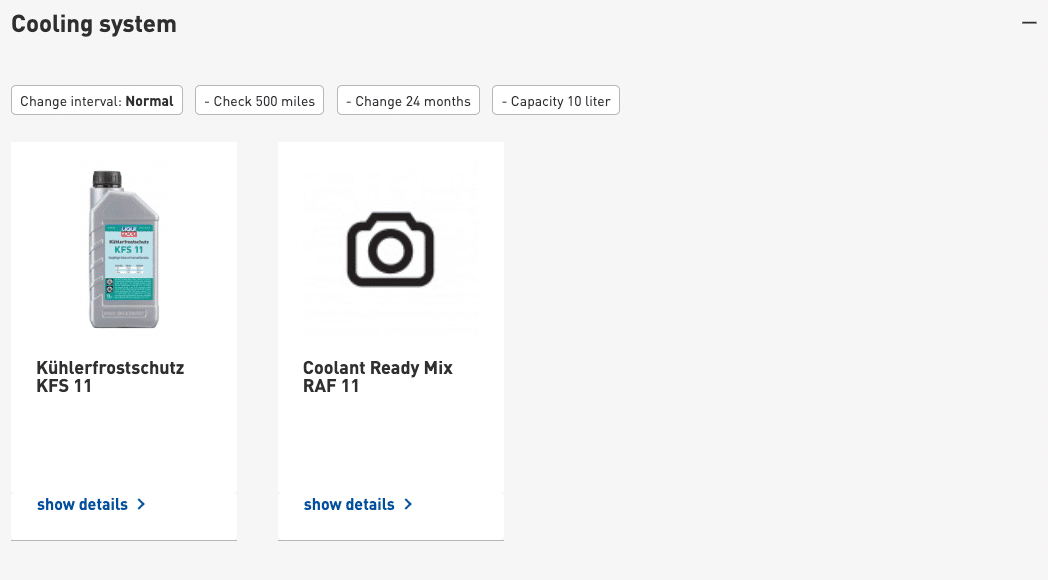
General Guidelines:
Mixing: Always mix the coolant with distilled or deionized water in the ratio recommended on the product label, typically 50/50. Using distilled or deionized water prevents mineral deposits from forming inside the cooling system.
Complete Flush: If you’re changing the type of coolant or if the existing coolant in the car is of unknown origin, it’s a good idea to perform a complete flush of the system to avoid mixing different types of coolants.
Regular Checks: Regularly check the cooling system for any leaks, ensure that hoses are in good condition, and monitor the coolant level and condition.
Consult a Specialist: Given the classic nature of the W123, it’s always a good idea to consult with a Mercedes-Benz specialist or a classic car mechanic to get specific recommendations based on the condition and history of your vehicle.
Using the right coolant and maintaining the cooling system will ensure your W123’s engine stays cool and runs efficiently for many years to come.
Which is the correct engine air, cabin and oil filter from Mahle for W123?
Mahle is a well-known supplier of automotive parts, including filters for various applications. If you’re looking to use Mahle filters for a Mercedes-Benz W123, the exact references can depend on the specific engine variant and model year of your W123, as there were several engines offered throughout its production.
For the sake of providing a general guide, here are some common Mahle filter references for typical W123 models:
Engine Air Filter:
Generally, for many of the W123 models, you’d be looking at Mahle’s LX 121 or LX 45 (but always confirm based on your specific engine).
Cabin Air Filter:
The W123 series does not have a cabin air filter in the modern sense. Instead, it has an interior ventilation dust filter, and the availability from Mahle might be limited. It’s essential to check with a supplier or dealership for specific part numbers. Alternatively, consider sourcing this filter from a Mercedes-Benz dealership or another aftermarket brand.
Oil Filter:
For gasoline engines, such as the M115 and M110, you might look for Mahle’s OC 28.
For the diesel engines like the OM617, the filter might be Mahle’s OC 91.
These are generalized references, and the best approach to ensure you get the correct filters is:
Vehicle Documentation: If you have an owner’s manual or service booklet, they might provide part numbers or specifications.
Supplier or Dealer: Provide your vehicle’s VIN (Vehicle Identification Number) to a Mahle dealer or supplier. They can use this information to ensure you get the correct parts.
Physical Inspection: If you have the current filters accessible, they might have part numbers printed on them. You can use these to cross-reference with Mahle’s catalog.
Always ensure that you’re getting the correct parts for your specific vehicle to ensure proper fitment and function.
How can i clean the fuel and exhaust system of a W123 with Liqui Moly additives?
Cleaning the fuel and exhaust system of a classic car like the Mercedes-Benz W123 can help improve its performance and longevity. Using additives from reputable companies like LIQUI MOLY can assist in this process. Here’s how you can clean the fuel and exhaust systems of a W123 using LIQUI MOLY additives:
Fuel System Cleaning:
Petrol Engines: Use the LIQUI MOLY Injection Cleaner. Add the contents of the can to the fuel tank and then fill up the tank. It cleans the fuel system and removes deposits from the fuel injectors and intake valves.
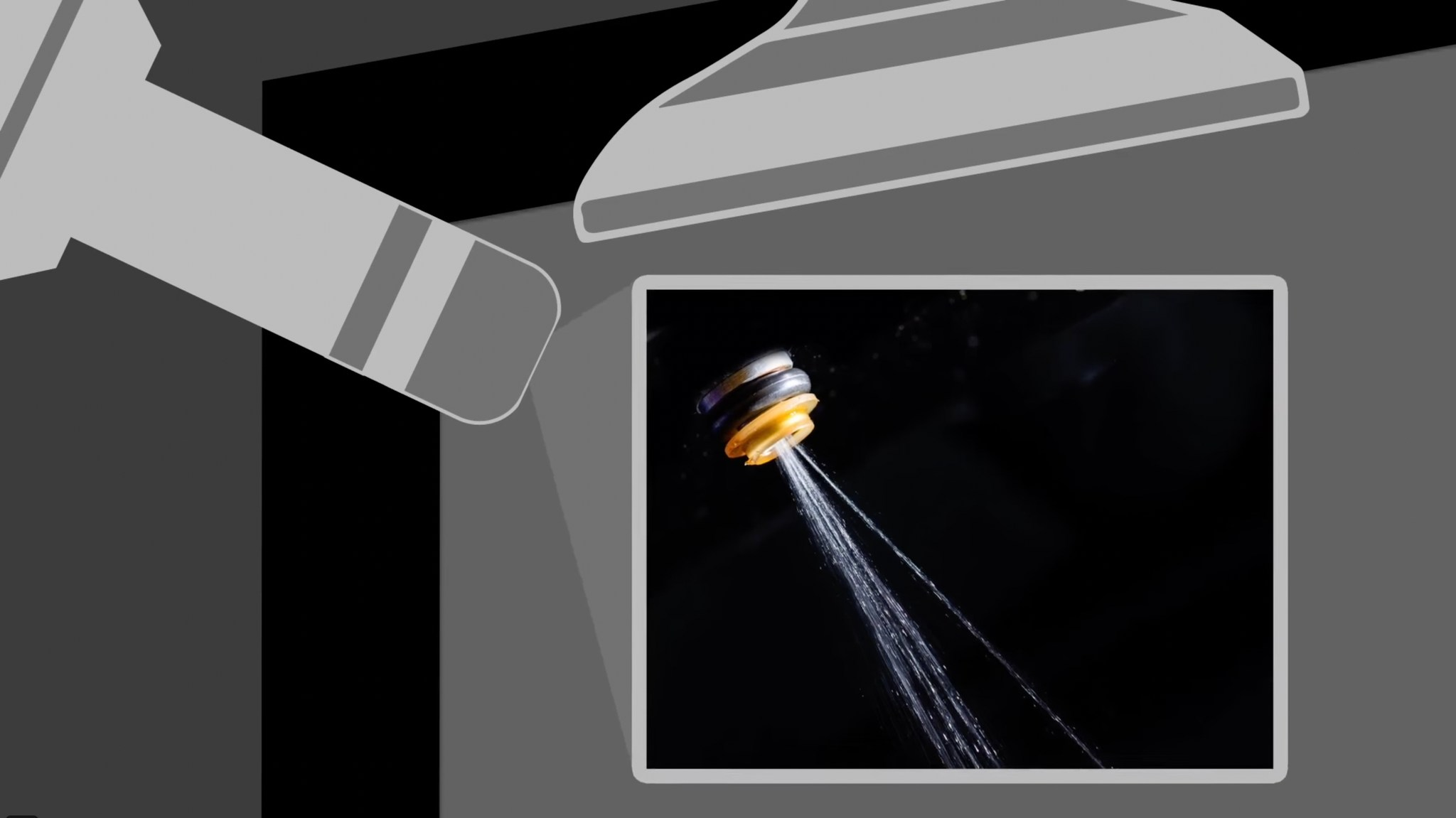
Diesel Engines: Use the LIQUI MOLY Diesel Purge or Super Diesel Additive. Diesel Purge is a more aggressive cleaner where you disconnect the diesel fuel lines and run the engine directly on Diesel Purge (follow the instructions closely). Super Diesel Additive can be added directly to the fuel tank during a fill-up and cleans the fuel system while also improving the cetane number of the diesel fuel.
Engine Internal Cleaning:
Before an oil change, use LIQUI MOLY Pro-Line Engine Flush. Add it to the engine oil before the oil change, let the engine run at idle for about 10-15 minutes (as per the product instructions), and then drain the oil. This helps in removing sludge and deposits inside the engine.
Exhaust System and Catalytic Converter Cleaning:
Use LIQUI MOLY Catalytic-System Cleaner. Add it to the fuel tank as per the product’s instructions. It helps reduce pollutants in the exhaust and can clean the catalytic converter and oxygen sensors, although it’s worth noting that not all W123 models came with catalytic converters depending on the market and year.
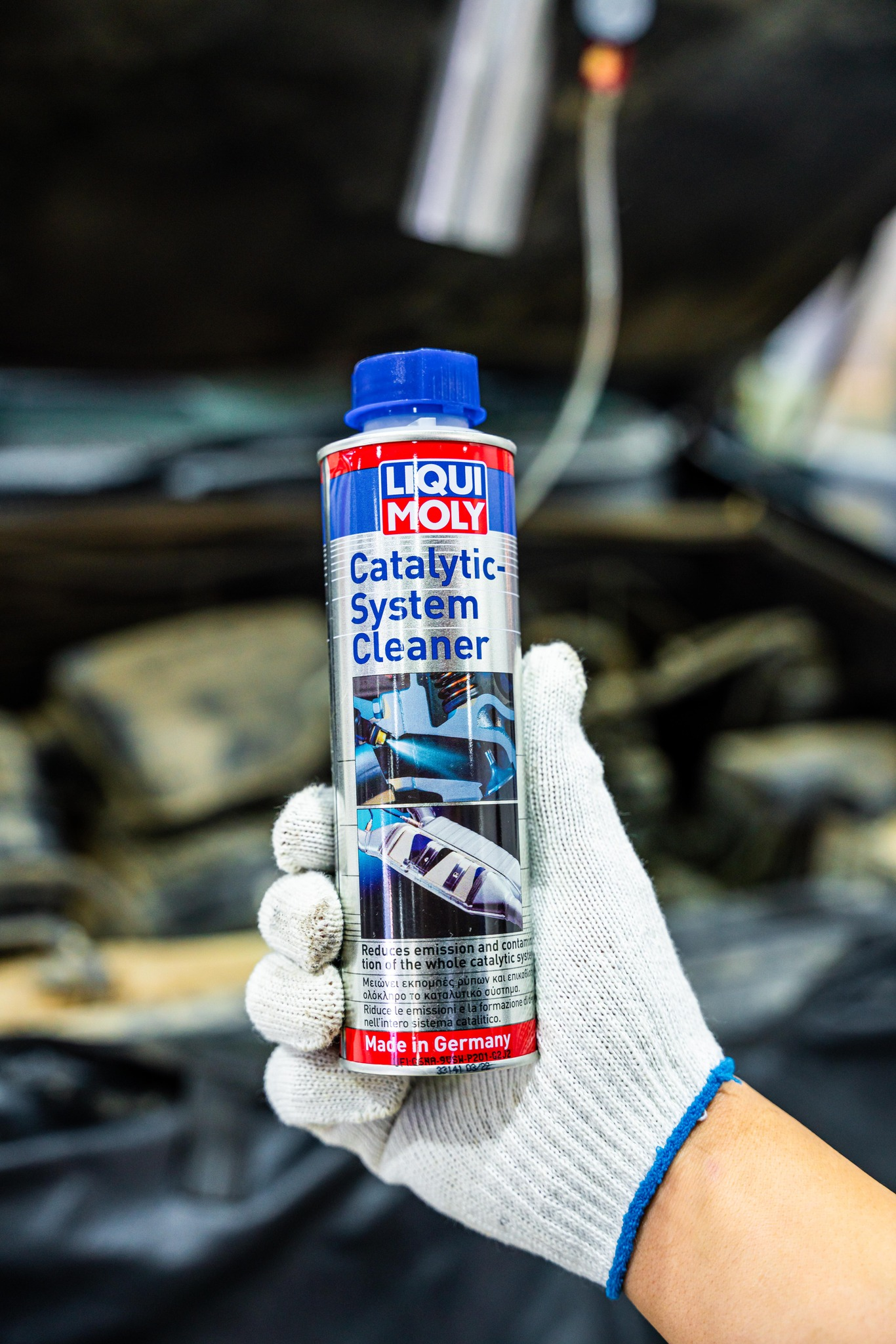
Combating Ethanol-related Issues (for Petrol Engines):
Modern fuels often contain ethanol, which can be problematic for older engines. Using LIQUI MOLY Valve Clean can help protect the engine from potential ethanol-related issues.
General Guidelines:
Always read and follow the instructions on the LIQUI MOLY product labels closely.
When using additives, especially those that require specific procedures like Diesel Purge, it’s advisable to wear protective gloves and safety glasses.
Ensure you’re in a well-ventilated area, preferably outdoors, when using these products.
After using additives that require subsequent actions like an oil change (e.g., Engine Flush), ensure you complete those actions to prevent potential engine damage.
By incorporating these additives into your maintenance routine for the W123, you can ensure cleaner fuel and exhaust systems, leading to better performance and reduced potential for issues.
Which Banner Battery fits for W123?
Banner is a reputable battery manufacturer that produces a wide range of batteries for various applications, including automotive use. The best Banner battery for a Mercedes-Benz W123 will depend on a few factors:
The specific engine and model variant of the W123.
Whether any modifications have been made to the vehicle that would impact its electrical demands.
The climate and driving conditions where the vehicle is typically used.
For the Mercedes-Benz W123, a common battery size is the 12V 88Ah, but this can vary based on the factors mentioned above.
A potential Banner battery option could be something from their “Power Bull” or “Starting Bull” line, which are suitable for passenger vehicles. For example:
Banner Power Bull PRO P77 40 (12V 77Ah) might be a suitable choice, but you would need to check the dimensions and terminal positions to ensure proper fitment in your specific vehicle.
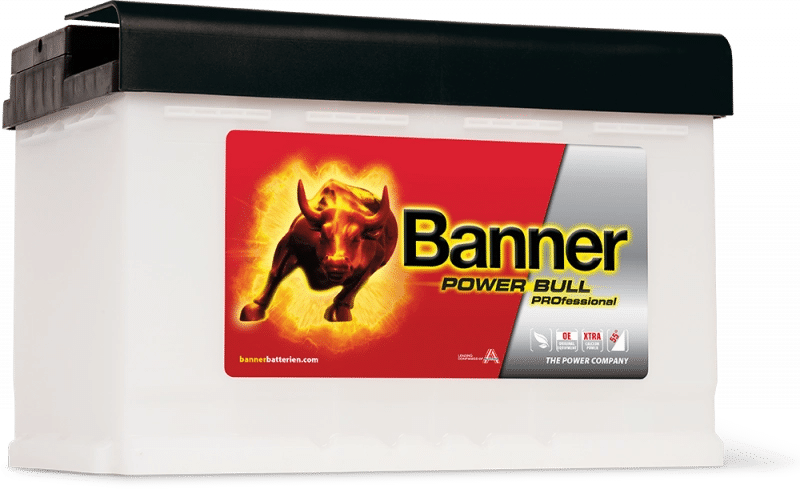
However, when selecting a battery, it’s vital to:
Check Physical Dimensions: Make sure the new battery will fit in the dedicated space in the W123’s engine bay.
Check Terminal Position and Type: Ensure the battery terminals are in the correct position (i.e., positive on the right or left) and are of the appropriate type (e.g., standard post, side post).
Ensure Adequate Capacity: Check the Ampere-hour (Ah) rating and Cold Cranking Amps (CCA) to ensure the battery can provide sufficient power for starting and running accessories.
Consult the Vehicle’s Manual or a Specialist: Refer to the W123’s owner’s manual or consult a Mercedes-Benz specialist or a battery distributor to confirm the exact battery specifications for your vehicle.
Lastly, when installing a new battery, always follow safety procedures: turn off the vehicle, wear protective gloves and goggles, and ensure the terminals don’t touch any metal parts to prevent short circuits.
Frequently Asked Questions about W123
The Mercedes-Benz W123 series is a classic line of cars known for its durability and iconic design. Many enthusiasts and owners often have questions about this model. Here are some frequently asked questions (FAQs) about the W123:
What years was the W123 produced?
The W123 was manufactured by Mercedes-Benz from 1976 to 1985.
What body styles were available for the W123?
The W123 was available in sedan, coupe, and estate (wagon) body styles.
Are parts readily available for the W123?
Given the popularity and durability of the W123, many parts are still available. Some may be harder to find than others, especially for specific variants or trim levels.
Which engines were available in the W123 series?
The W123 came with a variety of petrol and diesel engines, ranging from four to six cylinders.
Is the W123 a reliable car?
Yes, the W123 series is known for its robustness and reliability, which is why many are still on the road today.
How often should I service my W123?
Regular maintenance is key to keeping a W123 running smoothly. Typically, an oil and filter change every 3,000 to 5,000 miles is recommended for these older vehicles, but always refer to the owner’s manual or consult a specialist.
Can the W123 run on modern fuels?
While they can generally handle modern fuels, older engines may face issues due to ethanol content in today’s gasoline. It’s often recommended to use additives or seek ethanol-free gasoline for classic cars.
Are there common rust areas on the W123?
Like many cars of its era, the W123 can be prone to rust, especially in areas with harsh climates. Common rust spots include the wheel arches, bottom of doors, and around the windows.
What’s the difference between the W123 and the W124?
The W124 succeeded the W123 and brought about various improvements in terms of technology, aerodynamics, and safety. The W124 was produced from 1985 to 1995.
What’s the value of a W123 today?
The value can vary greatly depending on the model, condition, rarity, and historical significance. Some high-end models in pristine condition can fetch a premium price, while everyday runners are more affordable.
What are the common problems with the W123?
While robust, W123s can suffer from issues like any old car, including rust, electrical problems, worn suspension components, and aging rubber seals.
Can I modernize or upgrade my W123?
Many owners choose to upgrade parts of their W123s for reliability or performance, such as upgrading the stereo, adding modern conveniences, or improving the brakes.
If you have a W123 or are thinking of purchasing one, it’s always a good idea to join an enthusiast forum or club. They can be a wealth of information, and fellow members often share their expertise and experiences with these classic cars.

